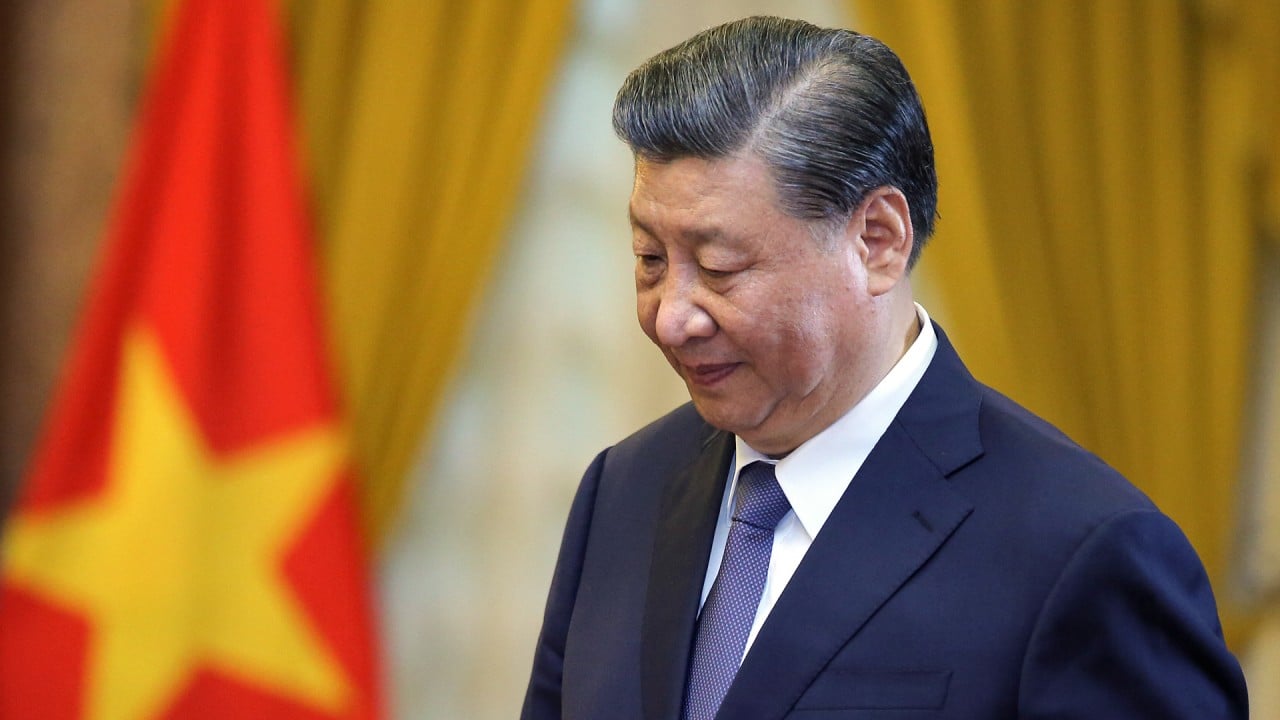
Is Vietnam warming to Nato-style weaponry? A rugged South Korean howitzer holds clues
- South Korea’s durable K9 howitzer has attracted interest from Hanoi as it seeks to diversify from Russian arms
- But a shift to Nato-standard weapons could signal Vietnam’s intent to counter China, analysts say
Meeting in Hanoi on April 23, Vietnamese deputy defence minister Hoang Xuan Chien and his South Korean counterpart Kim Seon-ho agreed to “further strengthen practical cooperation in various fields such as defence industry and logistics cooperation”, the South Korean defence ministry said.
Japan joins China, US, India as top-tier security, economic partner of Vietnam
Nguyen Hong Phong, a Vietnamese artillery commander, said Hanoi expressed hopes for a “prompt introduction” to the K9 in another meeting with Kim on April 25.
During a visit to South Korea last year, Phong personally confirmed the high standards of howitzer, according to the South Korean defence ministry. “He said that if the K9 howitzers were introduced in Vietnam, they could be deployed to the 204th artillery brigade,” the ministry said.
Vietnamese Defence Minister Phan Van Giang and other delegates were given a demonstration of the K9 during a visit to South Korea in March last year.
The K9 is a 155mm/52 calibre self-propelled howitzer developed and manufactured by South Korea’s Hanwha Aerospace. It can carry up to 48 projectiles and is capable of firing six rounds per minute with a range of 60km (37 miles).
Since its introduction in 1999, the K9 has become one of the South Korean defence industry’s biggest exports, accounting for more than half of howitzer orders worldwide.
More than 1,400 K9 units have so far been or will be exported to eight countries – Turkey, Poland, Finland, Estonia, India, Norway, Australia, and Egypt – six of them Nato member states or US allies.
The 155mm bore is a Nato-standard artillery shell that is rarely manufactured in Russia or China, with Chinese PLZ-45 howitzers being one of the few exceptions.
According to Nguyen Khac Giang, a visiting fellow for the Vietnam Studies Programme at Singapore’s ISEAS-Yusof Ishak Institute, Vietnam’s interest in the K9 howitzer is part of a strategy to “diversify” its arms sources beyond Russia, which supplies about 80 per cent of its weaponry.
“A key factor in Vietnam’s interest is South Korea’s willingness to transfer technology, a significant advantage as Hanoi looks to boost its domestic military production capabilities,” Giang said.
“A potential acquisition of the K9 would also support Vietnam’s ongoing efforts to modernise its military hardware.”
Yang Uk, a research fellow at the Asan Institute for Policy Studies in Seoul, said ammunition compatibility would be a key challenge in acquiring the South Korean weapons, since it would require Vietnam’s military to replace all of its 152mm Russian artillery shells.
However, he said, the K9 would be a “good weapons system” in containing Chinese military power, considering its price and capabilities.
“The ammunition itself will be completely different, so this could mean that [Vietnam’s] large-calibre firearms would gradually move to the Nato standard,” Yang said.
“It means that Vietnam is willing to be equipped with the capabilities to counter China … If you look at previous cases, India has also introduced the K9 to respond against Pakistan, but it also has the implication of countering China.”
China willing to boost military ties with Vietnam, ‘unite closely’
Meanwhile, Washington has reportedly offered to sell Vietnam F-16 jets, according to Reuters, as Hanoi upgraded US relations to its highest diplomatic status – alongside China and Russia – when President Joe Biden visited last September.
“China, a major arms exporter itself, is likely to view the increasing flow of South Korean arms into Southeast Asia with concern, seeing it both as competition in the arms market and as a geopolitical challenge, particularly when these arms are exported to countries involved in maritime disputes with China,” Giang said.
Kapil Kajal, an Asia-Pacific land warfare analyst at the global military intelligence company Janes, agreed that South China Sea tensions put Beijing at a disadvantage when it came to being a major weapons supplier to Hanoi.
He said that while Vietnam’s procurement of defence equipment from South Korea focused on supply chain diversification, it was also a part of its “hedging strategy” amid US-China tensions.
China’s Xi Jinping calls on Vietnam to use ‘political wisdom’ to manage ties
“Vietnam seeks to maintain a balance between its relationship with major powers to avoid over-reliance on any single country,” Kajal said.
“This allows Vietnam to enhance its bilateral relationships with multiple countries … Vietnam’s import of Nato-standard weapons may signal a strategic shift towards interoperability with Nato forces, potentially enhancing ties with the US and its allies.”
Zachary Abuza, a professor at the National War College in Washington, who specialises in Southeast Asia, said the Russian invasion of Ukraine had pushed Vietnam to find alternative sources of weapons, as international sanctions on Russia cast increased uncertainty over its defence supply chain.
“China poses a military threat to Vietnam. Hanoi would never buy weapons from Beijing, and Beijing would be unlikely to sell weapons to Hanoi,” Abuza said.
“I think Vietnam has been interesting … without a doubt, you are going to see a lot more Nato-standard weapons, but it will be in certain sectors and slowly.”


